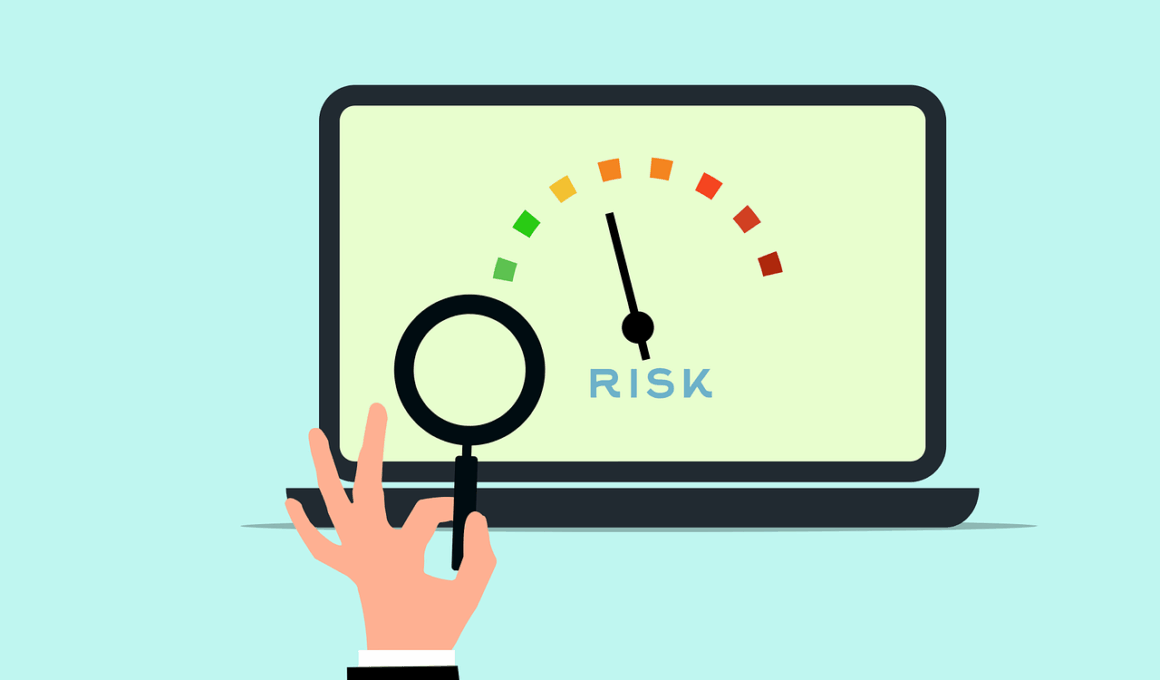Challenges of Global Compliance and Risk Management
In today’s interconnected world, organizations face significant challenges in ensuring global compliance and managing risk effectively. With diverse regulatory landscapes across countries, companies must adapt their practices to adhere to local laws while maintaining consistency and alignment with corporate policies. The complexity increases as organizations expand into new markets, requiring them to understand cultural nuances and legislation. As regulations become more stringent, particularly concerning data protection and environmental standards, organizations must continuously update their compliance frameworks. Moreover, global compliance is not a one-size-fits-all approach; firms need to analyze their unique risk profiles and risk appetite to mitigate potential violations. Failure to comply can lead to substantial fines, reputational damage, and loss of trust among stakeholders. Establishing a dedicated governance, risk, and compliance (GRC) team can help coordinate these efforts, but it requires investment in training and technology as well. Companies need robust systems for monitoring and reporting compliance, conducting audits, and ensuring that all departments align with corporate governance practices, which ensures sustainability in global operations and transparency in business conduct.
Moreover, the integration of technology into governance structures can be both an opportunity and a challenge. Digital transformation offers innovative tools for automating compliance processes and enhancing risk assessment capabilities. However, the adoption of these technologies requires significant change management and alignment with legacy systems. Organizations may struggle with selecting the right technologies and securing sufficient buy-in from stakeholders. Additionally, the fast-paced evolution of technology means that companies must stay ahead of the curve to address cybersecurity risks, data breaches, and other digital vulnerabilities. A proactive and agile approach to compliance is essential. However, this can lead to further complications as technologists and compliance officers may not always communicate effectively. It highlights the need for interdisciplinary collaboration across departments, ensuring that IT security measures align with regulatory requirements. The use of advanced analytics and machine learning can aid in identifying patterns and improving decision-making processes, but organizations must also address ethical considerations and maintain compliance with new regulations surrounding AI. Thus, while technology poses challenges, it also provides the means to navigate complex compliance landscapes more effectively.
The Importance of a Unified Compliance Strategy
Establishing a unified compliance strategy is critical for multinational firms facing varied legal requirements. A disjointed compliance approach can easily lead to oversights and inconsistencies, endangering organizational integrity. Embracing a holistic framework allows organizations to streamline processes while ensuring that all regional operations are aligned with global standards. This unification fosters better risk management practices, enabling organizations to identify and address vulnerabilities before they escalate into larger issues. Effective communication channels among global teams are essential for sharing best practices and lessons learned. Through these channels, organizations can leverage their collective knowledge to enhance their GRC efforts. Regular training sessions and updates will help ensure that employees remain informed of compliance changes and best practices. Moreover, deploying integrated compliance software can provide real-time data visibility, assisting firms in staying ahead of regulatory changes. By reviewing the effectiveness of their compliance strategies periodically, organizations can adapt to new regulations and emerging risks efficiently. This proactive approach benefits not only compliance but also strengthens corporate governance, creating a culture of integrity and accountability throughout the organization.
The evolving regulatory environment poses additional hurdles for compliance departments. New laws and guidelines are constantly being enacted, often at a rapid pace. For instance, changes in privacy laws, like the GDPR in Europe or CCPA in California, require immediate adaptations in organizational policies. With regulatory agencies ramping up enforcement actions, non-compliance could lead to severe penalties. Thus, companies must establish dynamic compliance frameworks capable of adapting to legal changes. It is vital to invest in compliance management systems that can automate updates, provide alerts, and track relevant compliance updates. Furthermore, organizations must prioritize educating their workforce about compliance implications surrounding new regulations. This ensures that employees understand the importance of compliance and are prepared to implement necessary changes swiftly. Engaging external experts can be beneficial in navigating complex regulatory landscapes, providing insights that may not be present within the organization. By proactively addressing changes in regulations, organizations bolster their risk management efforts while reinforcing their commitment to ethical governance practices, ultimately contributing to long-term business sustainability.
The Role of Culture in Compliance
Additionally, corporate culture plays a significant role in shaping compliance and risk management efforts. Organizations with a strong ethical culture are better positioned to adhere to compliance obligations, as employees feel empowered to speak up and report unethical behavior. Cultivating a culture of transparency involves leadership commitment, where leaders model ethical behavior and emphasize the importance of compliance in daily operations. Communication strategies that promote openness and dialogue reinforce these cultural values. Compliance initiatives should be framed not merely as legal requirements but as integral parts of business success. Organizations must invest in training programs that sensitize employees to the importance of ethics and compliance, promoting intrinsic motivations to follow regulations. Furthermore, fostering a culture where mistakes are viewed as learning opportunities rather than grounds for punishment encourages risk-aware behavior. This empowerment can significantly reduce compliance violations, as employees are more likely to report potential issues they encounter. Companies that prioritize cultural alignment with compliance standards can create resilient organizations capable of navigating the challenges presented by global compliance demands.
The convergence of environmental, social, and governance (ESG) factors into compliance and risk management strategies highlights another critical dimension. Stakeholders are increasingly pressing organizations to integrate ESG considerations into their business models. This demand places additional pressure on compliance departments to not only adhere to legal requirements but also to embrace sustainability commitments. Addressing ESG risks requires familiarity with various international standards, which can differ significantly. Organizations should aim for comprehensive strategies that align these factors with their compliance objectives, recognizing that social responsibility can enhance brand reputation and stakeholder trust. An effective ESG strategy can offset reputational risks while also contributing to compliance with evolving regulations focused on sustainability. Trade-offs between financial performance and compliance investments must be carefully evaluated. Firms should explore partnerships with NGOs and sustainability experts to align their practices with global best practices. As consumers and investors alike increasingly favor companies with strong ESG credentials, integrating these factors into compliance frameworks will ensure organizations remain competitive and mitigate potential risks associated with non-compliance.
Conclusion
Ultimately, the challenges of global compliance and risk management are immense, yet manageable with the right strategies in place. Organizations must commit to proactive compliance and risk practices that adapt to changing regulations while aligning with business goals. Continuous improvement frameworks, combined with technological integration, create robust architectures to support effective compliance and governance strategies. Establishing dedicated teams to monitor and implement these strategies ensures accountability and fosters a culture of compliance across all organizational levels. At the same time, organizations must cultivate open communication channels that allow for collaborative synergy between teams, enhancing knowledge sharing and compliance effectiveness. Addressing the multifaceted nature of global compliance is crucial to navigating regulatory complexities and managing risks effectively. Embracing cultural change and emphasizing ESG priorities will further reinforce resilience in compliance efforts. It is evident that a forward-thinking approach towards GRC will not only mitigate risks but also create value. This results in more sustainable business practices in the long term, leading organizations to thrive in increasingly complex environments while maintaining ethical governance and compliance standards.
Furthermore, organizations must remain vigilant in their approach, recognizing that complacency in compliance can lead to unforeseen consequences. With the landscape of regulatory expectations continually evolving, firms should embrace adaptive strategies that foster a culture of vigilance. It’s paramount that organizations engage in regular risk assessments to identify any potential weaknesses in their compliance programs. Building agility into compliance frameworks will ensure that companies can react promptly to emerging risks. The evolving regulatory landscape demands that businesses are transparent about compliance metrics, creating opportunities for stakeholder engagement and collaboration. This transparency nurtures trust and ensures accountability throughout organizational structures. Additionally, companies should consider developing robust incident response plans capable of addressing compliance breaches swiftly. By fostering a culture where compliance is ingrained in the organizational fabric, companies not only avoid penalties but also harness effective compliance as a competitive advantage. This proactive stance towards governance, risk, and compliance will ultimately define the organizations that excel in the future. A committed approach to compliance will reinforce corporate reputation, thereby enhancing long-term business sustainability.


